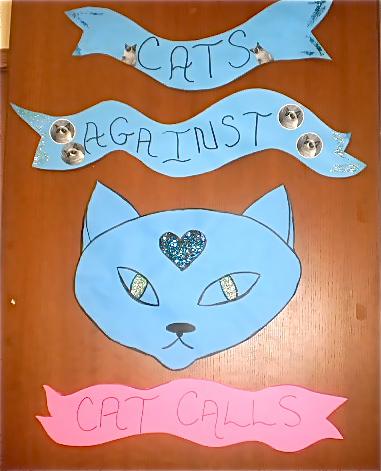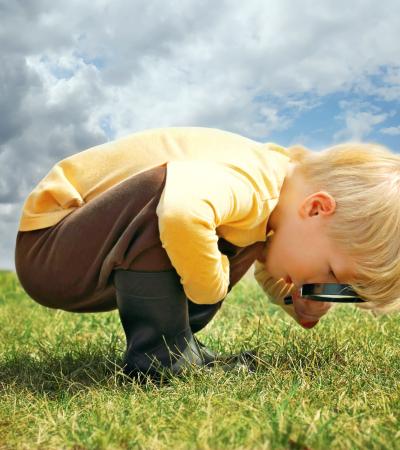Magpies are birds with a reputation for collecting shiny objects. It was with this in mind that children’s librarian Ingrid Abrams, a colorfully dressed, self-identified glitter addict, named her blog The Magpie Librarian. Abrams created the blog in 2012 to document her adventures in library programming at the Brooklyn Public Library. Four years later, she has nearly 5,500 social media followers who stay updated on her library advocacy and inventive displays.
Abrams, a director-at-large of ALA’s GLBT Round Table, now works as a librarian for an independent school in New York City. Her bold, frequently political posts range from promoting summer reading lists that “won’t make librarians die or children cry” to discussing how to confront sensitive social justice topics. These conversations don’t stop at her blog; Abrams has also spoken about her experiences at Book Riot and ALA’s New Members Round Table conferences.
Programming Librarian chatted with the Magpie Librarian about some of her most influential projects and how she covers hot-button topics armed with glitter, glue sticks and an open mind.
Programming Librarian: Why did you create the Magpie Librarian blog?

Ingrid Abrams: I was the only children’s librarian at the first couple of libraries I worked at in Brooklyn. I would spend all this time on a project and no one would really see I was working on it for this long, so I wanted to document the unseen work. I also created it because some people think that all children’s librarians do is color all day. I wanted people to know that projects take preparation and work — it’s not just coloring and eating paste.
PL: Advocacy and social justice are a large part of many Magpie Librarian posts. You’ve created displays that discuss body positivity, LGBTQ history and racism. What advice do you have for librarians who want to address these topics in their libraries?
IA: It can seem kind of scary at first because you’re bringing up these hot-button topics in the library, but it was easy for me at Brooklyn Public Library because I knew everybody supported me. But if your administration won’t back you up, things get tricky. You have to know who your allies are at work. What might be OK at my library might not be OK at someone else’s. My attitude used to be I wouldn’t ask permission; I would just do it. If someone didn’t like it, I would apologize, but it never came to that. It takes a little bit of bravery, honestly.
You’re also afraid of teenagers’ reactions with topics like body positivity and LGBT history, but these are some of the things I wish people would have talked to my generation about when we were younger. Teenagers can give you titters and snarky remarks, and you have to remember that’s the nature of teenagers. I also saw teenagers starting conversations from those displays. I would often catch a bunch of them quietly reading it.
PL: Why was it important to cover these issues in your public library?
IA: As a library that was open for 12 hours a day, we got patrons who had nowhere else to go, or they had unreliable housing. I wanted to make it clear that libraries are places to find books, but we’re also here to be allies.
The public library ends up being a catch-all for the rest of the city. Ideally, funding should go to after-school programs and social groups, but since it doesn’t, I would put up these displays as kind of a replacement for social workers and after-school programs.
PL: Have you ever received backlash?
IA: Not really. We had some vandalism on certain things but we had vandalism on nearly everything we did. I worked in NYC at a public library; I realize that that in itself is a privilege. There are certain things I did at BPL that I wouldn’t recreate at the school I’m at now. Creating hot-button displays isn’t worth getting fired over; your patrons need you. It’s just important to know your audience.

PL: In a post titled “An Incomplete and Brief History of Protests, Riots, and Uprisings,” you struggled with how to start a conversation in your library about race and protests after the Eric Garner verdict in New York City. What led you to make a display that combined images of protests in history?
IA: After the Eric Garner verdict, there were protests in the city — protests that I attended — and I was uncomfortable with the library not saying anything. Something needed to be said, but it was hard to vocalize that, especially as a white librarian. My basic philosophy in talking about racism and other sensitive topics is to listen, and then to amplify. These students are in school eight hours a day, and they don’t need anyone to tell them how to think. Instead, I wanted the display to be a conversation-starter.
I tried to pick images that were drawn or created by people of color. I included information about different protests in history, back to the suffragette movement and Stonewall riots. I wanted to make it clear to teenagers that people advocating for themselves is not something new. Women can vote and gay people can get married, but everything isn’t perfect.
PL: The first post I read on The Magpie Librarian was about your zine workshop for teens. You wrote that you were a little nervous to do a teen-related program since you usually work with children. Why did you choose a zine program?
IA: Zines were a big deal when I was a teenager in the ‘90s. Like all things, they went out of style, but they came back with a vengeance. The great thing about zines is that anyone can publish them. Since they’re inexpensive to make, they’re also great for libraries who don’t have a lot of money. It takes two seconds to explain to students that a zine is a blank book and you can do whatever you want with it.
PL: We’ve discussed some of my favorite displays, but what are some programs or displays you’re most proud of?
IA: Before I left the Brooklyn Public Library, I did a catapult program with rubber bands and popsicle sticks. We got to sneak in some science about simple machines and levers while knocking down some Voldemorts and Justin Biebers. It was sort of a satisfying way to end my time at BPL, flinging stuff as hard and as far as we could.
I’m also proud of my cat-calling display. I’ve found that more than any other display, people came to talk to me about it. It’s an everyday part of life in NYC, and rarely do we all get to talk about it. Sometimes you need validation from other people to recognize that you don’t like a situation. I also like putting cats in displays, so this was an excuse to put a giant glittery cat on a board.
It’s not always easy to access information about some of these topics, and you can send a child to the shelf for books about them, but there’s something powerful about putting things out in the open — to say “these feelings you have are normal and you have allies.” It’s scary to put stuff out there, but I also had powerful conversations that made me glad I took that leap.



